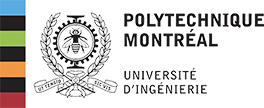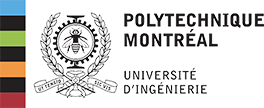1- CFD simulation of Rotating Packed Beds for Co2 capture and acid-gas removal, 2- Top Submerged Lance (TSL) furnace for phosphoric acid production via CFD simulation
Roshanak Rabiee
1- Developing a discrete element method code in the framework of deal.II, 2- CFD simulation of rotating packed beds
Shahab Golshan
Techno-economic analysis and assessments for commercialization of technologies
Raja Muhammad Afzal
Designing commercial-scale rotating packed beds for CO2 capture and acid gas removal
Alireza Shams
CFD simulations of TSL reactor for phosphorus production
Brasjesh Kumar Singh
Design and optimization of photobioreactor with the aid of CFD
Shuli Shu

Hydrodynamic Characterization of a Rotating Packed Bed through CFD Simulation in OpenFOAM-Eulerian model
Roshanak Rabiee
Rotating Packed Bed (RPB) is a promising technology for removing acid gas and carbon dioxide (CO2) owing to its high efficiency and potential lower cost compared to conventional packed beds. Inside an RPB, liquid phase is splashed on the packing material and distributed as small droplets. A large centrifugal force generated inside RPBs leads to a higher velocity, thinner liquid film, and smaller droplets, thus enhance mass transfer and improve the micromixing efficiency. Therefore, RPBs are potentially suitable for many chemical processes, such as CO2 adsorption and desorption.
A detailed study of RPB flow characteristics help enhance its micromixing efficiency and, hence, its overall performance. Successful scale-up and commercialization of an RPB require a comprehensive understanding of its flow dynamics. However, this is a very challenging study, in particular when attempted experimentally. It is not practical to perform expensive and time and energy-consuming experiments on RPBs. In contrast, a proper mathematical model can provide a more comprehensive and detailed information about the hydrodynamics of an RPB and its overall absorption performance. Among various mathematical models, computational fluid dynamics (CFD) has demonstrated to be a powerful tool to study the flow characteristics of an RPB in comparison with the corresponding time consuming and expensive experiments.
CFD modeling of an RPB consists of modeling two-phase flow and the effects of packing on the liquid and gas flows. On the basis of accomplished literature review and required variables for CFD simulation of an RPB, we decided to implement a novel model, where the packing is modeled as a porous media and it is integrated with an Eulerian-Eulerian model, also known as Two-Fluid model (TFM), to estimate liquid and gas interactions without resolving the interface between the two fluids. Therefore, it can be employed for large-scale simulations since they are not highly sensitive to mesh resolution. We have developed a TFM in an open-source code OpenFOAM to simulate hydrodynamics of RPBs under various operating conditions. The Results of new OpenFOAM code helped obtain a detailed understanding of flow characteristics in RPBs, including liquid holdup, pressure drop, and liquid velocity.
Designing commercial-scale rotating packed beds for CO2 capture and acid gas removal
Alireza Shams
For my Postdoc position, I am working on developing design tools for acid gas removal and CO2 capture using Rotating Packed Beds (RPBs) for the sake of process intensification. The design tool is accurately predictive and sensitive to different geometries/configurations, inlet gas compositions, temperature, pressure, and a range of inlet lean solvent specifications. The tool will find considerable attention soon for designing large-scale industrial RPBs, particularly for those operating under extreme conditions for which the cost, risk, and endeavors of the design and scale-up must be minimized. Also, I am adopting artificial neural networks (ANNs) to study the phase behavior of binary and ternary systems and to predict mass transfer coefficients for CO2-amine systems in RPBs.
Recently, I have joined the Rare Earth Elements Recovery project where I am performing a comprehensive techno-economic to find how the proposed process can result in both economic and environmental benefits.
A multi-scale feasibility analysis, design and optimization tool for rotating packed beds for carbon capture and acid gas removal processes
Shahab Golshan
According to the Intergovernmental Panel on Climate Change (IPCC), by the end of 21st century, emissions of greenhouse gasses will increase the average global temperature by 1.1 to 6.4 oC. An increase of 2 oC in global average temperature will lead to irrecoverable consequences, and IPCC have therefore stated that global CO2 emissions must be reduced by 50 to 80 percent by 2050. Despite its significance, the world is dangerously off-track. Consequently, it is inevitable to apply new efficient and operational solutions to improve the applicability and efficiency of carbon-capture processes. For this purpose, rotating packed beds (RPB) can be a metamorphosis. RPB, as a type of process intensification technology, were invented to enhance the mass transfer in carbonation processes. In RPB technology, a dominant centrifugal force is provided by rotating a porous packing at very high speeds (300-1500 rpm). Due to this high rotation speed, the liquid jet (amine-based liquid used for carbon capture) is broken into microscopic droplets, which significantly increases the carbonation efficiency within a short period of time. The design of RPBs is a complicated task, since there are many effective parameters that affect the performance of these devices. We studied the hydrodynamics of rotating packed beds (RPBs) by a Computational Fluid Dynamics (CFD) model (Volume of Fluid (VOF) method). This model is more accurate compared to other utilized CFD models, since a very fine mesh is used in the VOF, and there are no additional modules that could decrease the accuracy. On the other hand, the computational cost of VOF simulations are higher.
Design and optimization of photobioreactor with the aid of CFD
Shuli Shu
Cultivating microalgae with photobioreactors (PBRs) is an option to reduce the CO2 emission and an alternative way to face the global warming challenge. Knowledge of radial motion of microalgae cells in PBR is critical to the rational design, optimization, and scale-up of PBRs due to the rapid decrease of light intensity in the radial direction in PBRs. In this study, a Eulerian-Eulerian-Lagrangian computational multiphase fluid model based on OpenFOAM was used to investigate the motion of microalgae cells. However, the radial motion of microalgae cells cannot be well predicted due to the poor quantification of turbulent kinetic energy (TKE) of the liquid phase. First, a new model that can make a better prediction of TKE is developed. It is then shown that with the aid of this model, the maximum deviations between the square root of the TKE prediction and experimental data can be reduced from over 75% to less than 25% in the homogeneous flow regime. Second, this model is coupled with the Eulerian-Eulerian-Lagrangian multiphase flow approach to predict to the motion of microalgae cells and the predicted motion of microalgae cells is validated with a radioactive particle tracking (RPT) technique. Finally, the growth kinetics of the microalgae is coupled to predict the yields of the PBR. Optimized a pilot-scale photobioreactor (0.2 m in diameter and 4 m in height) for CO2 capture with a novel structure design by intensifying the key optimization parameter, i.e., light-dark frequency experienced by microalgae cells. The light-dark frequencies experienced by microalgae cells were increased by 75%. Moreover, the new design requires an illumination surface 30% less than traditional design, which indicates that the new design can save significant power cost.

